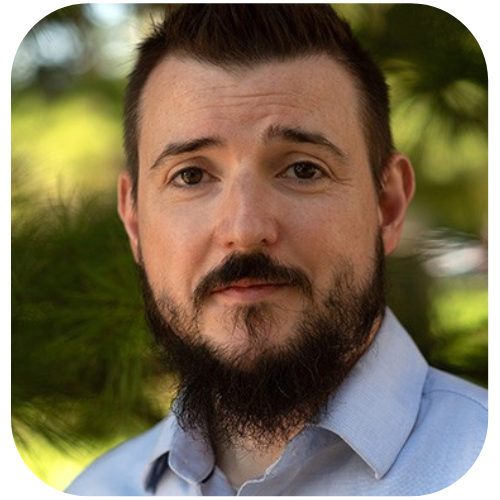Customers have choices, so if we want to retain them, we need to continuously deliver solutions to their challenges. This is achieved by listening to them, brainstorming with a wide array of stakeholders, and experimenting the solution until you achieve the goal.
CQ fluency’s Executive VP of Process and Technology, Dan Milczarski, was a speaker at the 2022 Plunet Summit and addressed this specific methodology. Dan focused on the technical application of CQ fluency’s highly automated CQautoPilot solution. But technology was only one part of the equation for CQautoPilot. The collaboration between CQ’s Customer Success team, Production team and Technology team ultimately resulted in an agile, yet effective, automation solution that solved a problem for many CQ fluency customers. Dan’s presentation at the Plunet Summit gave an overview of the technology implementation side of CQautoPilot.
CQautoPilot
To fill in the rest of the picture, Dan sat down with CQ fluency’s VP of Customer Success, Kelly Marek, in order to get her side of the CQautoPilot story.
Dan: Your Customer Success team plays such a crucial role for CQ fluency. You are the eyes and ears of CQ fluency to our customers. Can you give us a quick overview of the impetus for CQautoPilot?
Kelly: Last year, a team of healthcare executives were trying to figure out a way to speed up the process for delivering fully translated Coverage Determinations, Appeals and Grievances (CDAG) letters to their members. Their existing process wasn’t fast enough, wasn’t complete and didn’t meet regulatory requirements. They knew that it was only a matter of time before this would become a larger problem. My role was to be an ambassador – to partner and network with my clients so that I ask the right questions to the right customers and truly understand the who, what, why, how, when. Once I peeled back the layers, I had an understanding of their obstacles to solving the issue and enough intel to bring the problem statement to CQ fluency’s leadership team.


Dan: To demonstrate the speed aspect of the need, what kind of turnaround times (TATs) were they looking for?
Kelly: Yeah, talking about hours. Ranging from 2-8 hours based on the scope of work for each letter type. This is typically a process that takes a couple days instead of a couple hours. We made strides as a company towards decreasing our turn times from 4 to 2 days, which is still impressive in the industry – but it just wasn’t going to work for this purpose.
Dan: One of the aspects I brought up at the Plunet Summit was how key process mapping is for a successful automation implementation. But that process begins much sooner than when CQ fluency gets files for translation. How important is it to understand the customer’s processes for this type of solution?
Kelly: It’s essential. By understanding their current state we can see where to best connect or plug into their workflow. That allows us to make the process leaner and reduce cycle times. It also presented an opportunity for us to identify any potential gaps or risks in the customers business readiness for the workflow – many legacy systems aren’t built to manage multilingual content and this can be challenging. Walking through our plans was mutually beneficial in getting our companies aligned for success.
Dan: One thing that really impressed me was how fast this all came together. You escalated awareness to the CQ fluency leadership team and we acted quickly.
Kelly: Yeah, we all aligned quickly on this and assembled a meeting of the minds on this. What I love about CQ fluency is that we believe that everyone can come up with new ideas. Our diverse team of technology and production leaders helped figure out the best solution that met all the regulatory and budgetary requirements for our customers here. A lot of companies can build a great solution; the key is how fast you can bring it to market. We got it to market very quickly because of our approach.


Dan: Plunet is the most adaptable and customizable tool on the market and that flexibility was exactly what we needed. While having a solution was important, how the proposal of automation was presented was equally important. Presenting a completely new process can sometimes bring resistance. How did you approach that?
Kelly: The key was showing that the benefits are much greater than the risks. Formulating that communication was a team effort. And by the way, the cost for an on-demand translation service that never sleeps but is also validated by human beings would have been astronomical if not for the potential to share the solution across affected customers, safely. I’m proud that CQ fluency took this opportunity to add value for our customers in a time of need and provided a solution that’s also cost effective. Many might be tempted to take advantage.
Dan: The concept of applicability is strong at CQ fluency. This means solving a problem for one set of customers and then finding ways to apply that solution to others. This ended up expanding the scope of CQautoPilot to other project types as well, correct?
Kelly: What makes CQ fluency different is that we focus on healthcare to have a deep understanding of those industries, but we still take the time to understand our client’s specific challenges. Our nimble, collaborative culture allows us to apply experiences from across our customers to ensure we properly address their needs. Overall, we were able to then take the final client solution and then discuss this case study to other clients and bring their attention to the fact that a solution exists.


